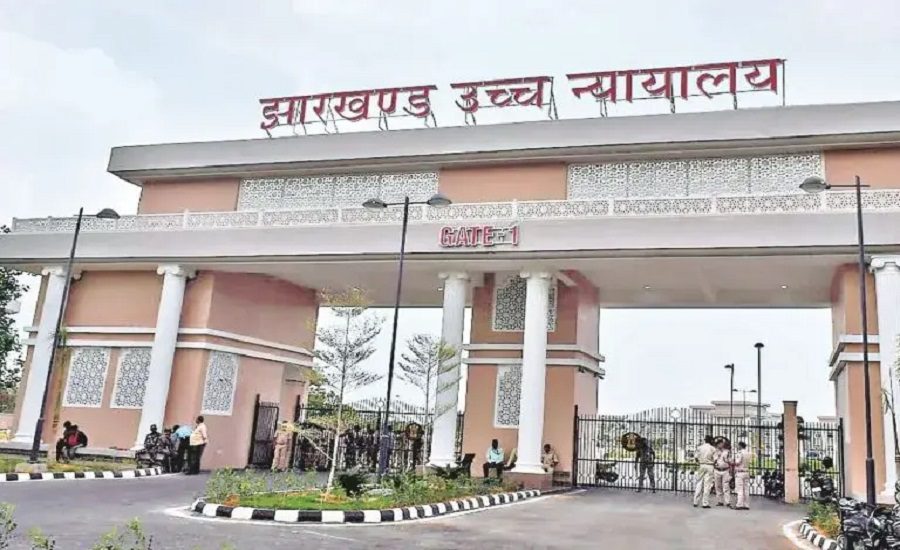Ranchi: In a major decision by the Jharkhand High Court, a Single-Judge Bench led by Justice Deepak Roshan has held that where rural land development and housing are concerned, the Jharkhand Panchayati Raj Act, 2001 (hereafter “Panchayati Raj Act”) supersedes the Jharkhand Regional Development Authority Act (hereafter “RDA Act”) when the two statutes come into irreconcilable conflict.
This judgment clarifies jurisdictional ambiguities in rural housing and building plan approvals — a key issue for local self-government and land development in Jharkhand.
Background of the Case
The case arose from a batch of writ petitions filed by individuals who had purchased land in Village Sidroll (under a Gram Panchayat jurisdiction) and built structures after taking permission from the Panchayat.
Later, the Ranchi Regional Development Authority (RRDA) initiated proceedings for demolition of those buildings on the ground that no prior approval under Section 30 of the RDA Act had been obtained.
The petitioners argued that their land fell within a Gram Panchayat area and hence, under the Panchayati Raj Act and after the 73rd Constitutional Amendment, the Panchayat had jurisdiction—not the RDA.
Key Legal Findings in Jharkhand Panchayati Raj Act vs Development Authority Case
- The Court noted that the 73rd Constitutional Amendment significantly enhanced the powers of Panchayats, moving them beyond mere execution of State-government policies, to enable design and implementation of development and social justice programmes at the local level.
- In its analysis, the Court referred to Entry 10 of the Eleventh Schedule of the Constitution (“Rural Housing”), and held that entry should be given the widest possible interpretation in favour of Panchayats. The Court said this entry must be read to include the power of sanctioning building plans under applicable bye-laws.
Conflict Between Statutes: RDA Act vs Jharkhand Panchayati Raj Act
- Section 30 of the RDA Act, which mandates prior permission from the authority for land development; and
- Provisions of the Panchayati Raj Act, regulating rural housing and enabling Panchayats to sanction building maps and construction plans.
Because the two statutes could not be reconciled, the Court applied the principle: “where two legislations conflict, a later and more specific law prevails over an earlier general law.”
Accordingly, the RDA Act’s conflicting provisions were held to be impliedly repealed to the extent of inconsistency.
Final Order
The Court clarified that RRDA has no jurisdiction in respect of sanctioning building plans in the subject area and that no prior approval under Section 30 of the RDA Act is required for the buildings by the petitioners. Thus, the demolition orders were set aside.
Importance of the Decision
- This judgment strengthens the role of Gram Panchayats in rural land and housing matters — reinforcing the local-self-government model.
- For individuals and developers building in rural local-governance zones in Jharkhand, the decision removes the confusion of which authority to approach — Panchayat or RDA.
- The judgment serves as a precedent for similar conflicts between local-self-government statutes and development-authority laws in other states.
- Given the policy thrust on rural housing, infrastructure and self-governance, this decision may accelerate building approvals in Panchayat areas — facilitating faster rural development.
What to watch / Implications
Panchayats & Local Authorities: Must gear up to handle building plan sanctions in rural areas effectively.
Regional Development Authorities: Need to reassess their jurisdiction and processes, especially in villages under Panchayat governance.
State Government & Urban-Rural Transition Zones: For areas undergoing transition from rural to semi-urban, this judgment raises questions of whether Panchayat jurisdiction holds or RDA kicks in — potential policy clarifications needed.
Builders & Landowners: Should verify which statute applies to their land-parcel: Panchayat jurisdiction vs development-authority jurisdiction — to avoid later legal challenges.
Litigation Trend: Expect more litigation in other states where overlapping statutes exist — this decision may serve as persuasive authority.



























